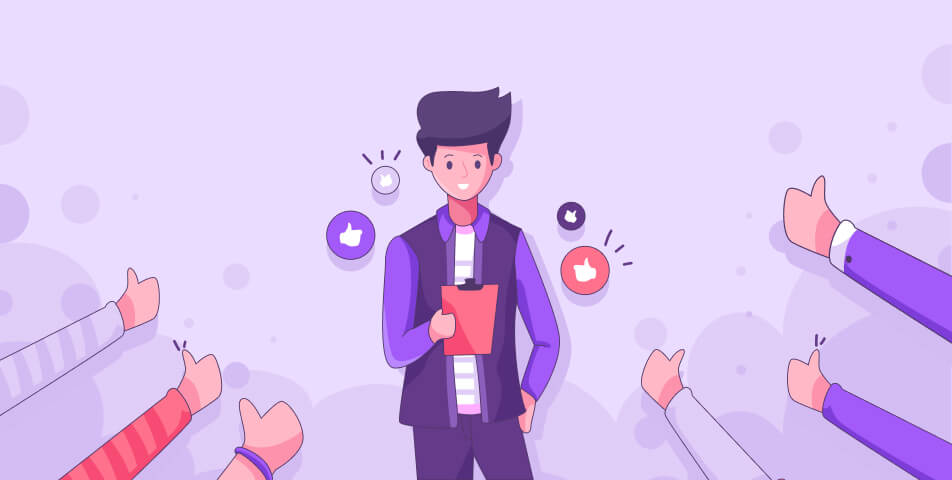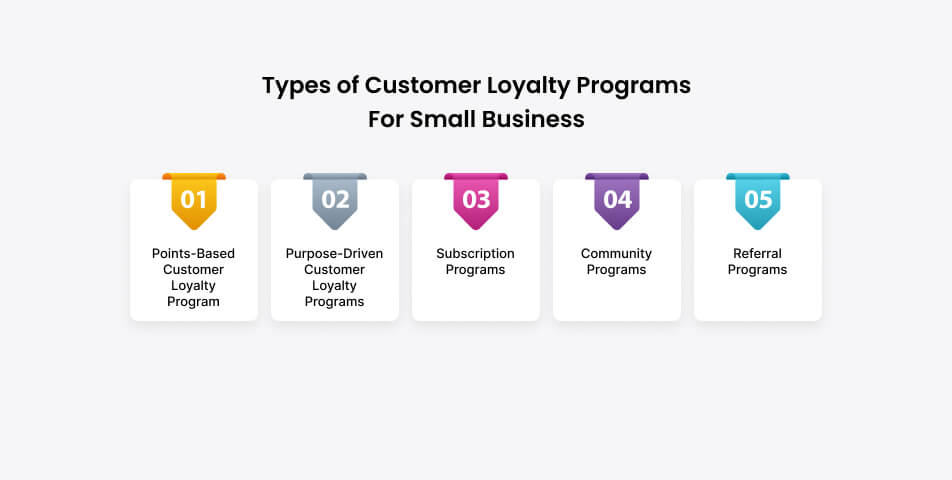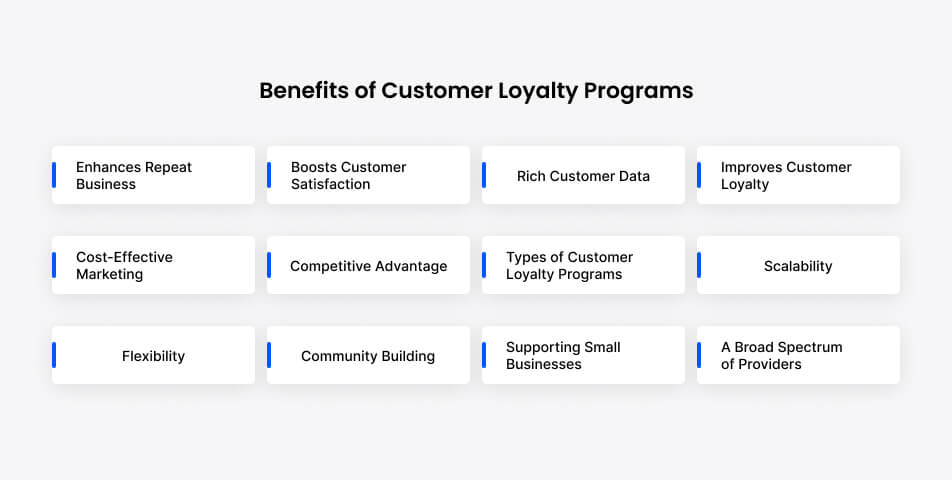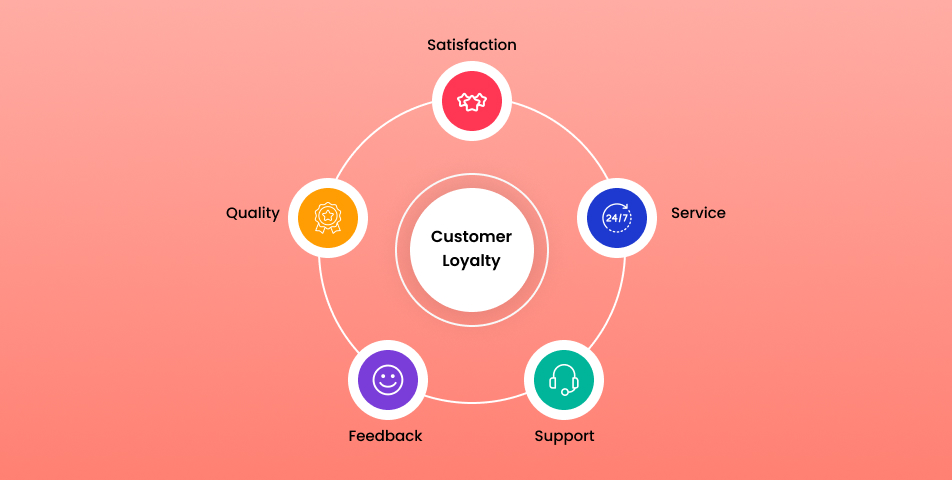Customer Loyalty Programs For Small Businesses because nearly 77% of consumers participate in a retail loyalty program. That’s a sign of widespread acceptance! 🛍️
Every small business owner knows the importance of building strong and best customer loyalty programs. Not only does it make financial sense, but it also helps create a community and fosters long-term relationships.
In this article, we will explore various effective programs that can boost customer loyalty programs for small businesses.
Key Takeaway :
Customer loyalty programs for small businesses offer incentives, rewards, discounts, or special offers to customers to promote and reward their brand loyalty. These programs can enhance repeat business, boost customer satisfaction, provide rich customer data, improve customer loyalty, offer cost-effective marketing, and provide a competitive advantage, among other benefits.
What is a Customer Loyalty Program?
A customer loyalty program for small businesses is a marketing strategy that is created to promote and reward customers for their brand loyalty. Customer loyalty programs offer incentives, rewards, discounts, or special offers to customers.

The purpose of this program is to facilitate long-term relationships with customers, build trust, and boost higher CSAT, and revenue for the company.
5 Types of Customer Loyalty Programs For Small Business

Now that we understand what is considered the Best Customer Loyalty Program, let’s explore the different types available for small businesses:
1. Points-Based Customer Loyalty Program:
- Customers earn points for every purchase they make, which can be redeemed for rewards, discounts, or free products.
- The more they spend, the more points they accumulate, encouraging repeat purchases.
- Loyalty programs for small businesses can offer tiered rewards, providing extra benefits as customers reach different levels of points.
- Customization allows businesses to align the program with their unique offerings, offering bonus points for specific purchases or special events.
2. Purpose-Driven Customer Loyalty Programs:
- Today’s consumers value businesses that support social or environmental causes.
- Purpose-driven loyalty programs align business values with customers’ values.
- Offering rewards for supporting causes creates meaning and connection.
- An example: A coffee shop donates a percentage of each purchase to a local charity, tracking customers’ contributions with loyalty cards.
- Purpose-driven programs also serve as effective marketing tools, attracting like-minded customers and differentiating from competitors.
3. Subscription Programs:
- Subscription-based loyalty programs foster long-term relationships with exclusive benefits like early access to products and personalized recommendations.
- Consistent revenue and customer appreciation are ensured by encouraging customers to become subscribers.
- Valuable customer feedback and data can be gathered to improve offerings and marketing strategies.
- Ideal for businesses with products or services regularly purchased by customers.
4. Community Programs:
- Community loyalty programs create a sense of belonging by hosting exclusive events or workshops.
- Connecting customers fosters a supportive community, encouraging loyalty and repeat business.
- A platform for sharing experiences and recommendations enhances customer engagement.
5. Referral Programs:
- Referral programs encourage customers to refer friends and family in exchange for rewards or discounts.
- Drives new customer acquisition and boosts loyalty.
- Customer investment in your brand grows when they refer others.
- Expands customer base organically and taps into new markets through word-of-mouth.
12 Benefits of Customer Loyalty Programs

Best Customer loyalty programs provide numerous advantages for businesses aiming to build lasting customer relationships. Undeniable benefits of customer loyalty programs, let’s understand it.
Companies with strong loyalty marketing programs grow revenues roughly 2.5 times faster than those without
Let’s understand some of the benefits of customer loyalty programs:
Enhances Repeat Business:
Loyalty programs encourage customers to return, exemplifying the importance of customer loyalty programs.
Boosts Customer Satisfaction:
Through customer loyalty examples, businesses can create personalized experiences to enhance contentment.
Rich Customer Data:
Customer loyalty management software helps in understanding shopping behaviours, leading to better services.
Improves Customer Loyalty:
Customizable rewards and offers can improve customer loyalty, making them feel special and valued.
Cost-Effective Marketing:
Using customer loyalty program ideas, businesses can create targeted campaigns at a fraction of the cost.
Competitive Advantage:
The advantages of customer loyalty include setting businesses apart from competitors.
Types of Customer Loyalty Programs:
From points to tier systems, different types allow businesses to choose the best customer loyalty programs for small business.
Scalability:
The best customer loyalty software lets small and large businesses build customer loyalty programs easily.
Flexibility:
Create a customer loyalty program that aligns with your brand. Free customer loyalty program software offers accessible starting points.
Community Building:
Customer loyalty and customer loyalty programs forge stronger connections with your audience.
Supporting Small Businesses:
Customer loyalty software for small businesses levels the playing field, letting them compete with big players.
A Broad Spectrum of Providers:
Many customer loyalty program providers offer varied solutions for different needs.
Implement Customer Loyalty Program Right Away
Customer Loyalty Program for Small Business is an important thing to implement. There are certain ways through which types of customer loyalty programs can be implemented and the best ways to do so is the various customer loyalty management software.
In this blog, you get to explore more options regarding the Customer Loyalty Program for Small Business, which helps in bringing more customers into the business.
FAQs
1. What are customer loyalty programs, and how do they work?
Customer loyalty programs are marketing strategies designed to reward customers for their repeated business. They work by offering incentives like points, discounts, or exclusive perks to encourage long-term customer relationships and boost repeat purchases. For example, a points-based program lets customers earn points for every purchase, which they can redeem for rewards.
2. Why are loyalty programs important for small businesses?
Loyalty programs help small businesses build strong customer relationships, increase repeat sales, and gather valuable customer data. They also provide a competitive edge by creating personalized experiences and promoting brand loyalty, which is crucial for competing with larger players in the market.
3. What are the key benefits of implementing loyalty programs?
Key benefits include:
Increased repeat business and customer satisfaction.
Enhanced customer data insights for better marketing strategies.
Cost-effective customer retention compared to acquiring new customers.
A competitive advantage through personalized rewards and unique offerings.


